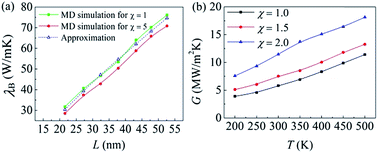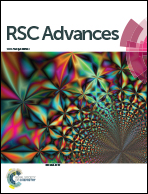Thermal transport in a graphene–MoS2 bilayer heterostructure: a molecular dynamics study
Abstract
With the availability of various types of two-dimensional materials such as graphene (GE) and MoS2, intensive efforts have been devoted to their van der Waals heterostructures obtained by vertically stacking them together for novel functionalities and applications. The thermal transport behavior of these heterostructures plays a pivotal role in determining their functional performance. This work studies the thermal transport in a GE–MoS2 bilayer heterostructure via molecular dynamics simulation. It is found that the in-plane thermal conductivity λB of the GE–MoS2 bilayer can be approximated by that of an isolated monolayer GE. The λB of an infinitely long GE–MoS2 bilayer is calculated to be 1037 W m−1 K−1, while its out-of-plane interface thermal conductance G is obtained as 5.81 MW m−2 K−1. The increase in the interface coupling strengths can dramatically increase G but has little effect on λB. On the other hand, G also increases with temperature because of the enhanced phonon coupling between GE and MoS2. This study is helpful for understanding the interface thermal transport behaviors of novel van der Waals heterostructures and could provide guidance for optimal design and control of their thermal properties.


 Please wait while we load your content...
Please wait while we load your content...